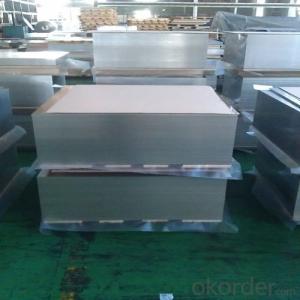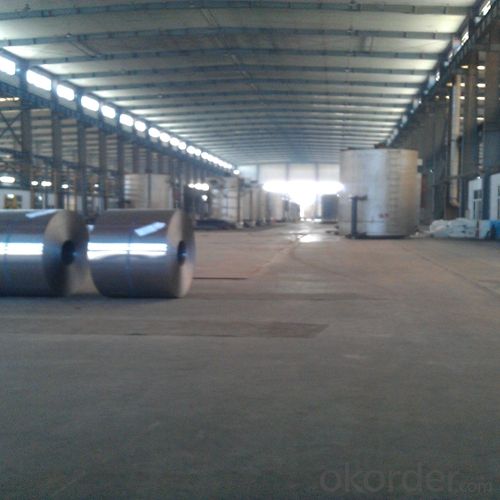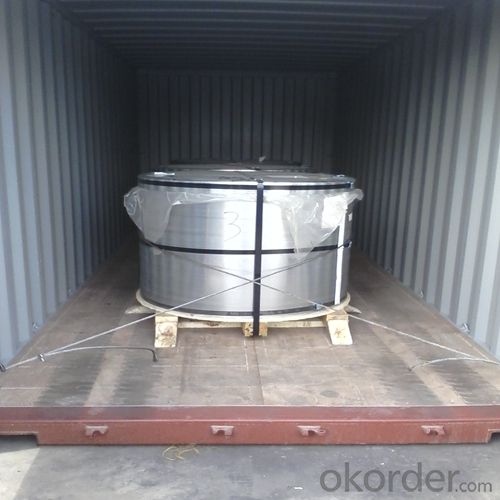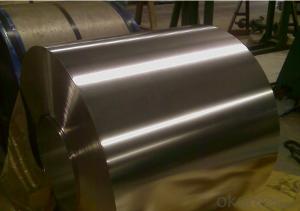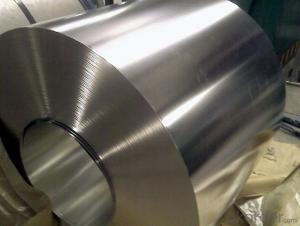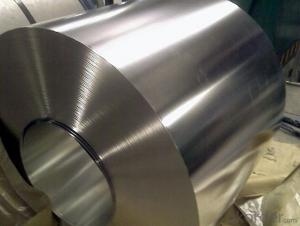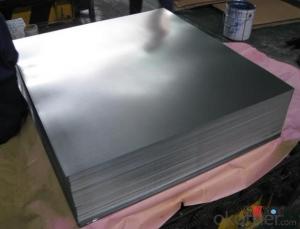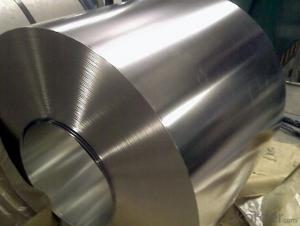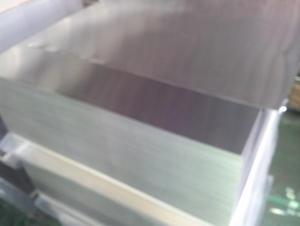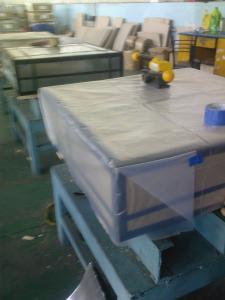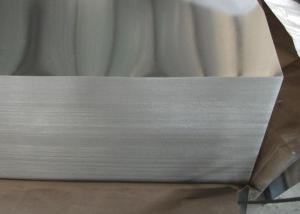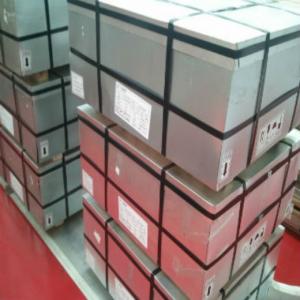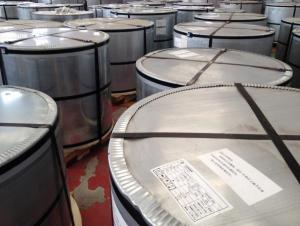ETP Electrolytic Tinplate Coils and Sheet For Tin Containers
- Loading Port:
- Tianjin
- Payment Terms:
- TT OR LC
- Min Order Qty:
- 25 m.t.
- Supply Capability:
- 15000 m.t./month
OKorder Service Pledge
OKorder Financial Service
You Might Also Like
Specification
1.Structure of ETP Electrolytic Tinplate Coils and Sheet For Tin Containers Description
TIN PLATE is characterized by its beautiful metallic luster. Products with various kinds of surface roughness are produced by selecting the surface finish of the substrate steel sheet.
2.Main Features of the ETP Electrolytic Tinplate Coils and Sheet For Tin Containers
Appearance – Tinplate is characterized by its beautiful metallic luster. Products with various kinds of surface roughness are produced by selecting the surface finish of the substrate steel sheet.
Paintability and printability – Tinplates have excellent paintability and printability. Printing is beautifully finished using various lacquers and inks.
Formability and strength – Tinplates have got very good formability and strength. By selecting a proper temper grade, appropriate formability is obtained for different applications as well as the required strength after forming.
Corrosion resistance – Tinplate has got good corrosion resistance. By selecting a proper coating weight, appropriate corrosion resistance is obtained against container contents. Coated items should meet 24 hour 5 % salt spray requirement.
Solderability and weldability – Tinplates can be joined both by soldering or welding. These properties of tinplate are used for making various types of cans.
Hygienic – Tin coating provides good and non toxic barrier properties to protect food products from impurities, bacteria, moisture, light and odours.
Safe – Tinplate being low weight and high strength makes food cans easy to ship and transport.
Eco friendly – Tinplate offers 100 % recyclability.
Tin is not good for low temperature applications since it changes structure and loses adhesion when exposed to temperatures below – 40 deg C.
3.ETP Electrolytic Tinplate Coils and Sheet For Tin Containers Images
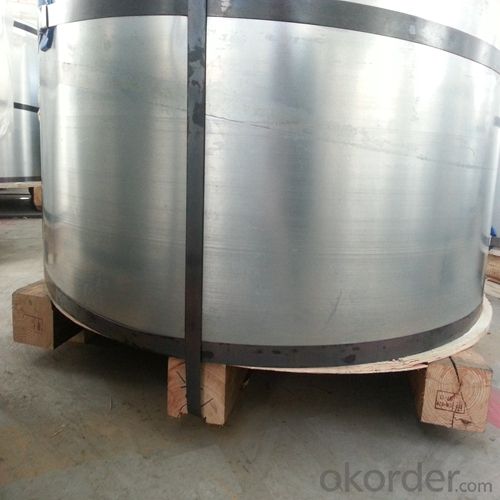
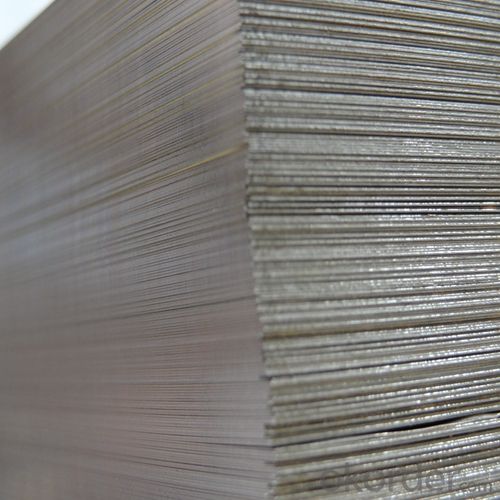
4.ETP Electrolytic Tinplate Coils and Sheet For Tin Containers Specification
Specification of :
Standard: ISO 11949 -1995, GB/T2520-2000,JIS G3303,ASTM A623, BS EN 10202
Material: MR,SPCC
Thickness:0.15mm - 0.50mm
Width: 600mm -1150mm
Temper: T1-T5
Annealing: BA & CA
Coil Inner Diameter: 508mm
Weight: 6-10 tons/coil 1~1.7 tons/sheets bundle
Passivation:311
Oil: DOS
Surface: Finish,bright,stone,matte,silver
5.FAQ of ETP Electrolytic Tinplate Coils and Sheet For Tin Containers
- How are the tinplates specified?
The tinplates are specified as per the steel base, extent of tempering, the coating weight, annealing method and the surface finish.
- How many types there are for base steels?
The base steels are of three types: Type MR, L, D
- Q: How is tinplate affected by different types of dairy products?
- Tinplate is not significantly affected by different types of dairy products. It is a commonly used material for packaging dairy products due to its excellent corrosion resistance and ability to maintain product quality and freshness.
- Q: How does tinplate contribute to the aesthetics of furniture?
- Tinplate contributes to the aesthetics of furniture by adding a unique and visually appealing element. Its shiny and reflective surface can enhance the overall look of furniture, giving it a modern and stylish appearance. Additionally, tinplate can be easily customized and decorated with various patterns and colors, allowing for endless design possibilities and the creation of eye-catching furniture pieces.
- Q: Can tinplate packaging be used for sports equipment?
- Yes, tinplate packaging can be used for sports equipment. Tinplate is a durable and versatile material that can provide protection and longevity to various products, including sports equipment. It offers excellent resistance to corrosion and can withstand impact, making it suitable for packaging items like bats, balls, and other sports gear. Additionally, tinplate can be customized with attractive designs and branding, enhancing the overall presentation of the products.
- Q: What are the different forms and shapes tinplate can be manufactured into?
- Tinplate can be manufactured into various forms and shapes, including sheets, coils, cans, containers, boxes, and packaging materials.
- Q: What are the advantages of using tinplate for aerosol cans?
- Some advantages of using tinplate for aerosol cans include its durability, corrosion resistance, and ability to maintain product quality. Tinplate cans offer a longer shelf life for aerosol products as they prevent air and moisture from entering the can, ensuring the product remains fresh and effective. Additionally, tinplate cans are lightweight, making them convenient for transportation and storage. They are also recyclable, contributing to sustainability efforts.
- Q: How is tinplate coated for stationery and office supplies?
- Tinplate is typically coated for stationery and office supplies through a process called electrolytic tinplating, where a thin layer of tin is electroplated onto the surface of the steel. This coating provides protection against corrosion and enhances the aesthetic appeal of the product.
- Q: How does tinplate perform in terms of printability?
- Tinplate performs exceptionally well in terms of printability. Its smooth surface allows for high-quality printing with vibrant colors and fine details. Additionally, the tin coating provides excellent ink adhesion, ensuring sharp and crisp prints.
- Q: How does tinplate perform in terms of mechanical strength and durability?
- Tinplate is known for its excellent mechanical strength and durability. It is highly resistant to bending, denting, and breaking, making it ideal for various applications where strength is crucial. Additionally, tinplate is highly durable and can withstand harsh environmental conditions, including corrosion and rust. Overall, tinplate is a reliable and long-lasting material in terms of mechanical strength and durability.
- Q: How is tinplate used in the automotive industry?
- Tinplate is commonly used in the automotive industry for manufacturing various components such as fuel tanks, exhaust systems, and body panels. It provides excellent corrosion resistance, making it suitable for protecting these parts from rust and other environmental damage. Additionally, tinplate is lightweight yet strong, contributing to fuel efficiency and overall vehicle performance.
- Q: Can tinplate packaging be used for gardening products?
- Yes, tinplate packaging can be used for gardening products. Tinplate is a durable and corrosion-resistant material that can protect gardening products from moisture, sunlight, and other external elements. It is commonly used for packaging seeds, fertilizers, gardening tools, and other related products.
Send your message to us
ETP Electrolytic Tinplate Coils and Sheet For Tin Containers
- Loading Port:
- Tianjin
- Payment Terms:
- TT OR LC
- Min Order Qty:
- 25 m.t.
- Supply Capability:
- 15000 m.t./month
OKorder Service Pledge
OKorder Financial Service
Similar products
Hot products
Hot Searches
Related keywords
